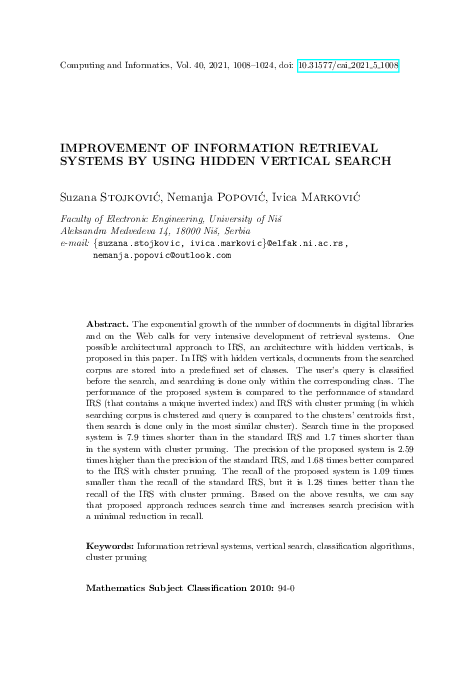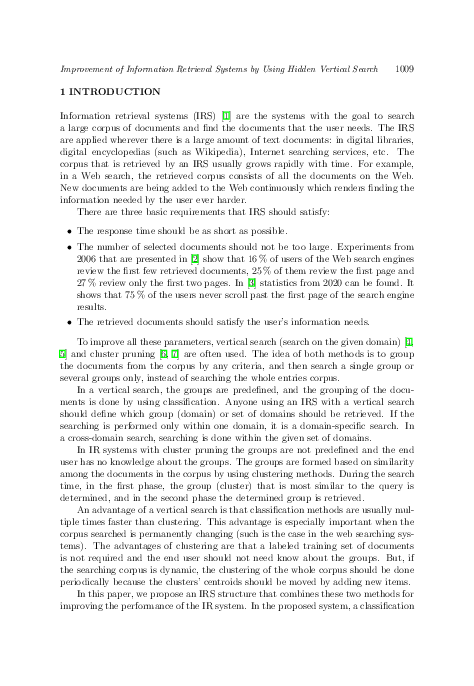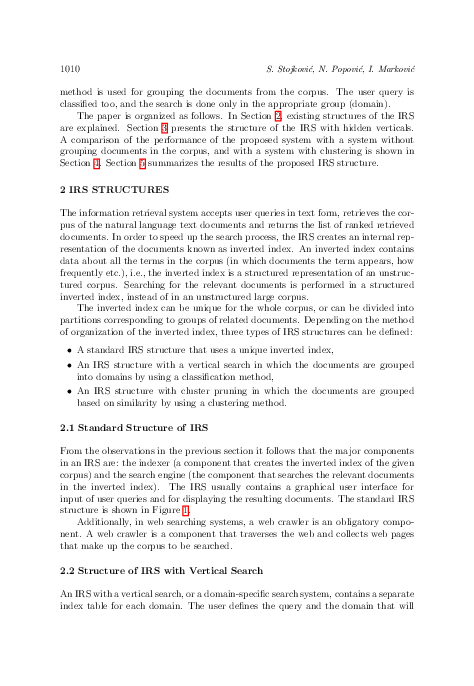Improvement of Information Retrieval Systems by Using Hidden Vertical Search
keywords: Information retrieval systems, vertical search, classification algorithms, cluster pruning
The exponential growth of the number of documents in digital libraries and on the Web calls for very intensive development of retrieval systems. One possible architectural approach to IRS, an architecture with hidden verticals, is proposed in this paper. In IRS with hidden verticals, documents from the searched corpus are stored into a predefined set of classes. The user's query is classified before the search, and searching is done only within the corresponding class. The performance of the proposed system is compared to the performance of standard IRS (that contains a unique inverted index) and IRS with cluster pruning (in which searching corpus is clustered and query is compared to the clusters' centroids first, then search is done only in the most similar cluster). Search time in the proposed system is 7.9 times shorter than in the standard IRS and 1.7 times shorter than in the system with cluster pruning. The precision of the proposed system is 2.59 times higher than the precision of the standard IRS, and 1.68 times better compared to the IRS with cluster pruning. The recall of the proposed system is 1.09 times smaller than the recall of the standard IRS, but it is 1.28 times better than the recall of the IRS with cluster pruning. Based on the above results, we can say that proposed approach reduces search time and increases search precision with a minimal reduction in recall.
mathematics subject classification 2000: 94-0
reference: Vol. 40, 2021, No. 5, pp. 1008–1024


